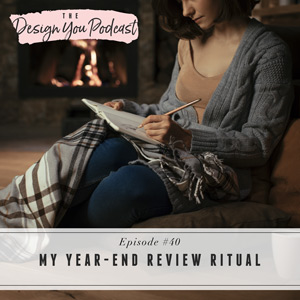
Friends, as we close in on the new year, I like to take this time to really reflect on the last 12 months of my life. Because I’m so grateful for all of you for being here on the podcast with me, what I’m going to do today is give you my year-end review process so that you can start doing it too!
It’s so important to reflect and review your year because it’s the best way to determine where you are currently, where you want to be, and who you need to be to get there. I’m sharing my process, which includes seven phases, to really cleanse and start on a clean slate for the new year!
Tune in to learn a new tool to build a life and business you love. I’ve learned so much about myself by doing this process every year, and I hope you’ll try this out for yourself because I know it’s going to change your life!
Grab my Year-End Review guide here!





